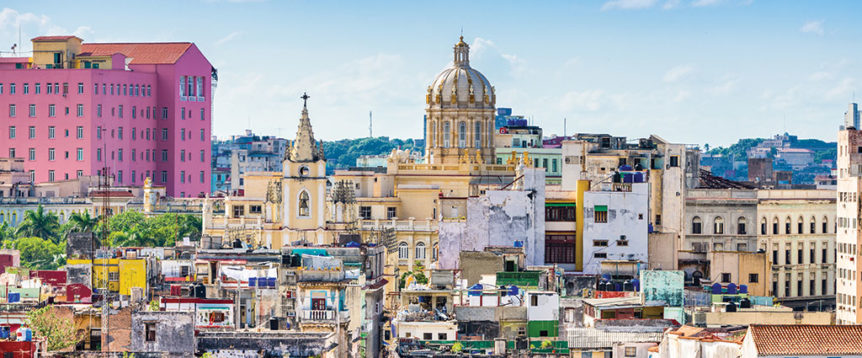Descriptions of some cultures boil down nicely into just a few words. Not so with the nation of Cuba, where centuries of eclectic influences have molded its society into a colorful, if sometimes enigmatic, blend of tastes (both literal and figurative) and approaches to life.
History has been a major player in shaping Cuban culture, but perhaps nothing defines the nation more than simple geography. Cuba is a tropical island—or rather 4,000 of them—and with that comes warmth of both climate and spirit. You feel it in the spicy dances (think mambo, rumba and cha-cha), taste it in the zesty cuisine and see it in the people’s friendly smiles.
Land and History
Cuba’s size and prominent Caribbean location also influenced its history. Christopher Columbus landed here in 1492, claiming the land for Spain and ushering in 400 years of Spanish rule. The island’s ideal climate for sugarcane and coffee plantations made it ripe for slave trade, with about 800,000 slaves trafficked to Cuba—nearly double the number who ended up in the United States. When the slave trade diminished in the mid-1800s, many Chinese people arrived with eight-year contracts to work on the plantations. Although few Chinese remain today, their imprint crops up occasionally in Cuban cuisine, along with more prominent native Caribbean (Taíno), Spanish, African and even French influences.
Classic Cuban Fare
Rice-and-bean dishes anchor many Cuban meals. One mainstay is black beans and rice, called Moros y Christianos, which translates to “Moors and Christians.” Pork and ham are prominent meats, while tomatoes star in most sauces. The frequent use of tropical fruits like mango, guava and plantains, and root vegetables such as yuca (cassava) and taro (malanga) again nod to geography as a major shaper of Cuban culture. As does the popularity of Cuban sandwiches and even fritas, Cuban mini-hamburgers that mix ground beef and chorizo and are topped with onions and shoestring fries; both of these American-style favorites emerged in the 1800s, when workers flowed back and forth more easily over the 90 miles of ocean between Cuba and Florida.
Over the years, many a society has left its stamp on Cuba, but—as with fritas—Cubans have a knack for taking the best parts of other cultures and adding their own unique twists. Then in turn, Cuba leaves its own indelible mark on anyone who has the privilege to delve into the rich offerings of its cuisine and culture.


